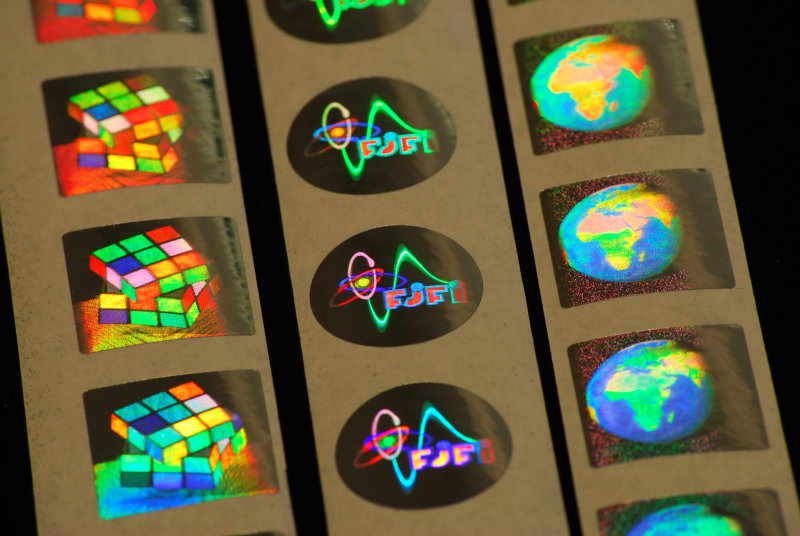Research topics
Currently we are doing research in several fields. New fields of interest are based on projects of our students mostly in optical signal processing, metamaterials, x-ray diffractive optics, etc. Our interests can be divided into following categories:
- Diffractive optics and holography
- Theory, modelling, and design of photonic micro- and nano-structures
- Optical recording materials
- Nanoparticles and nanostructures
- Optical trapping and manipulation
- Non-linear photorefractive optics and spatial solitons
- Ion-induced nanopatterning of surfaces
Diffractive optics and holography
|
The main field of our interest is diffractive optics and holography. History of holography within our group began already in seventies of the 20-th century. Today, we are dealing with wide spectrum of problems starting from classical optical holography, through synthetic diffractive structures, to the latest computer generated holograms for various scientific and industrial applications. We work on the theory of diffraction gratings and general diffractive structures, computer synthesis of holograms, subwavelength photonic structures, we also develop imaging holographic elements, holographic memories, etc. The important point of our interest are technologies such as the laser beam and the electron beam lithography for realization of synthetic micro and nanostructures for various applications. We also develop computer driven laser writers and new holographic elements for application in the field of optical document security. |
|
Theory, modelling, and design of photonic micro- and nano-structures
|
Within this field we are working on topics that extend the studies and modelling of diffraction gratings. The research is oriented on development of software tools for modelling (for electronic and photonic structures) and the modelling methods (such as RCWA, PWE, FDTD, etc.). We deal with physics and modelling of various kinds of electronic and photonic micro and nanostructures such as photonic crystals, subwavelength structures, plasmonic structures, metamaterials, and others. Recently, we are working also on fabrication of particular micro and nanostructures using the facilities within the group and on optimization of these elements for selected applications. |
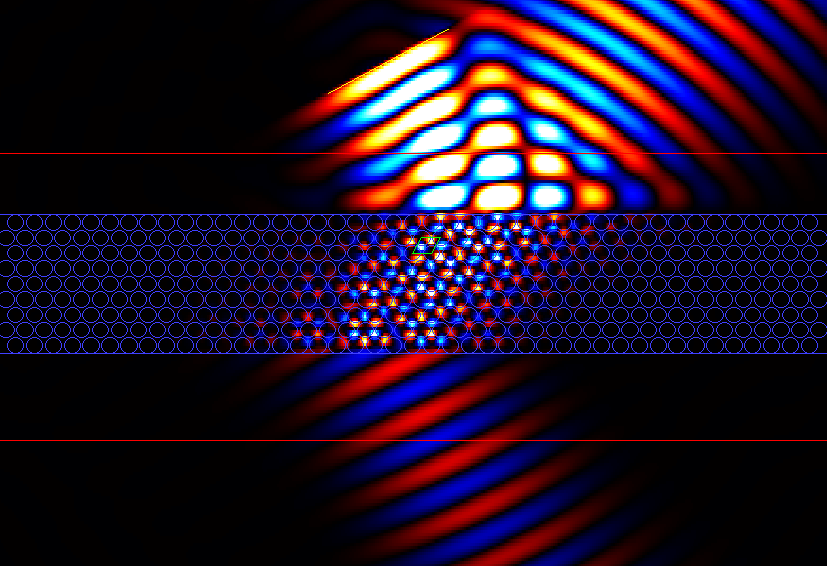 |
Optical recording materials
|
Our research in the field of optical recording materials was initiated by the need for deveoping own silver halide emulsion. Today, we produce large format silver halide plates with high quality coating with excellent parameters. We can tune the recording materials exactly according to the needs of particular experiment. Besides the mentioned silver halide emulsion we also prepare plates with dichromated gelatine, photopolymers, and photoresits. We also develop photopolymer materials and prepare wide spectrum of resist plates for our experiments. Recently, we are developing also completely new materials based on nanoparticles and photorefractive media. |
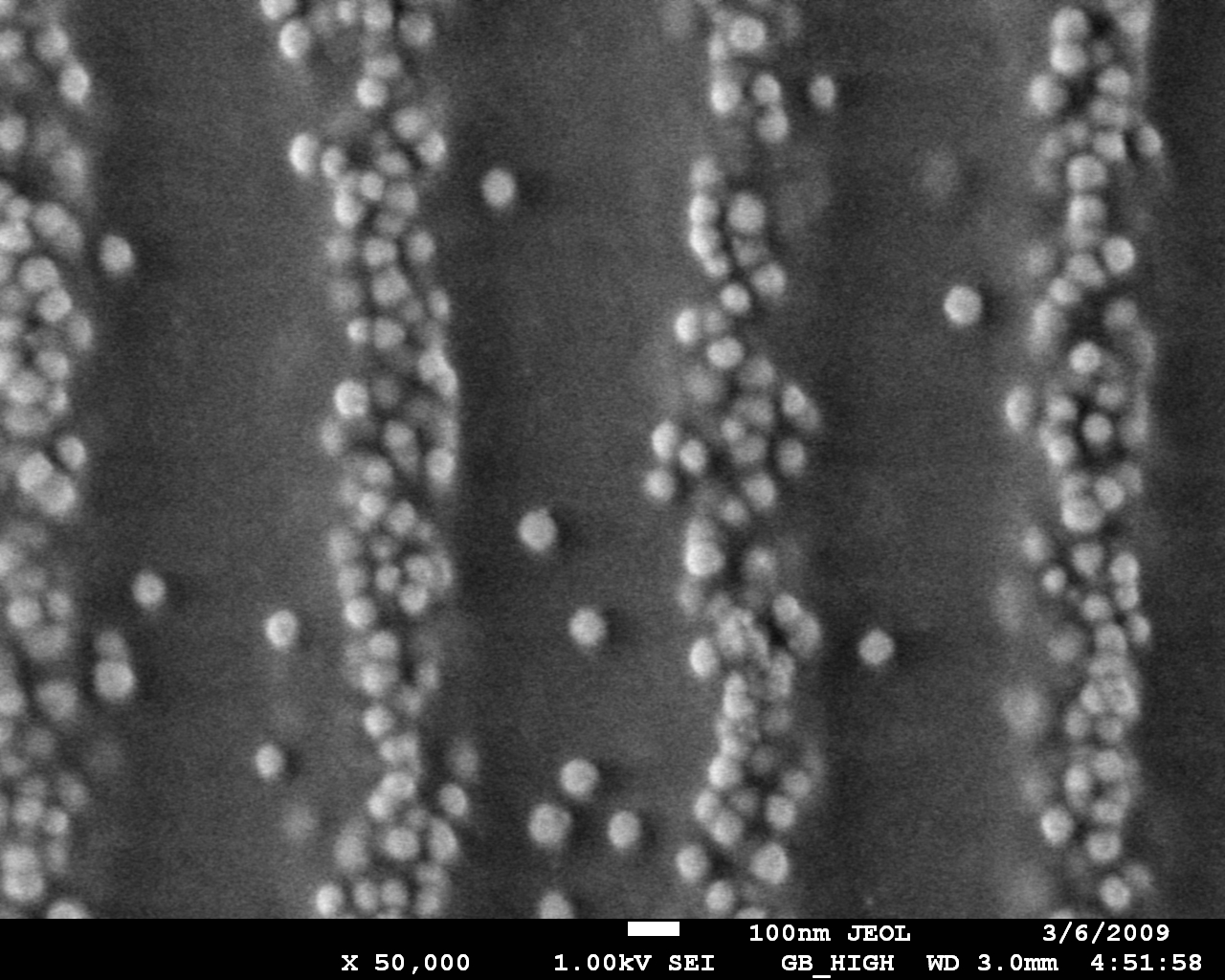 |
Nanoparticles and nanostructures
|
Our research in this field is oriented on particle nanostructures and preparing organized systems of nanoparticles of various types. We usually use techniques of colloid chemistry oriented on particle nanostructures. The experimental research is connected to the theoretical background in modelling of quantum confined particles, which is also done within our group. Today, we prepare semiconductor and metallic nanoparticles and develop new techniques for manipulaton and organization of particles. The results are usually applied in fields such as detectors and biomedical applications. |
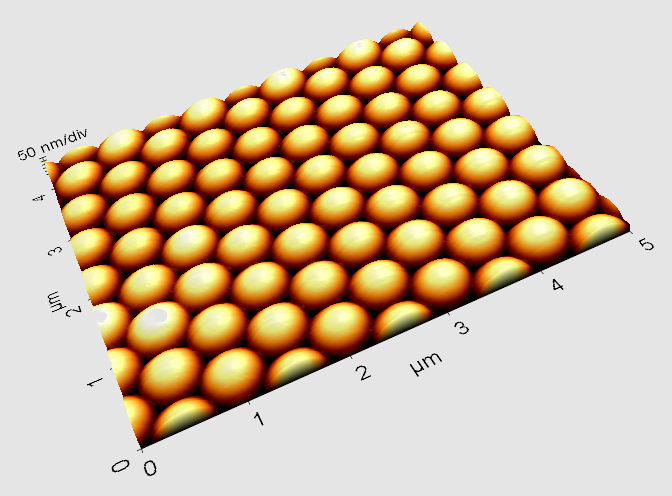 |
Optical trapping and manipulation
|
Optical manipulation is a relatively new field of our interest, where we build on our huge experience from the field of optical systems, microscopy, synthetic holography, and spatial light modulators. We study theoretical models a simulate interaction of light in a form of highly focused beams with particles of various size and shape. We have constructed a holographic optical tweezer for general dynamic simultaneous micromanipulation with many particles in a 3D space. The system is based on calculation and optimization of holographic microstructure in real time and projection of this structure on a high resolution computer driven spatial light modulator, which generates the dynamic hologram of trapping field in the sample. We also study approaches based on standing waves and general phase filtering. |
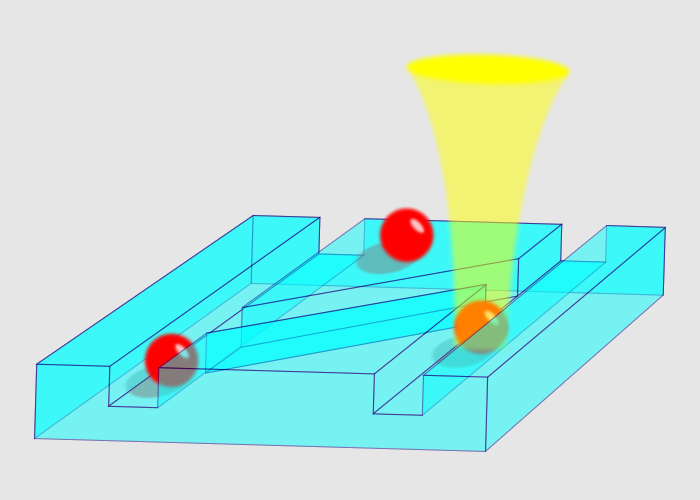 |
Non-linear photorefractive optics and spatial solitons
|
The field of non-linear optics has been studied for many years in a form of basic research of non-linear photorefractive optical materials. We published several interesting results in both theoretical and experimental domains. We studied selenites (BBO) and ferroelectrics (LiNbO3, BaTiO3). Today, the research is mostly oriented on photorefractive spatial solitons in lithium niobate. New topics are prepared in the field of organic photorefractive materials. |
Ion-induced nanopatterning of surfaces
| An emerging application of ion beam bombardment is the formation of periodic surface nanostructures using so-called ion beam sculpting. With this technique we are capable of producing nanopatterns with periodicities ranging from micrometers down to a few nanometers on macroscopic areas on the surfaces of various materials (figure shows an ion-induced nanopattern on Ni(001) surface, inset shows a corresponding computer simulation). In our group we investigate this phenomenon experimentally using medium energy ions (tens of keV) and we also focus on the theoretical background of this phenomenon. | 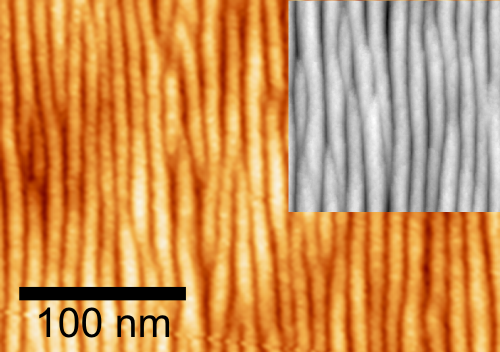 |



